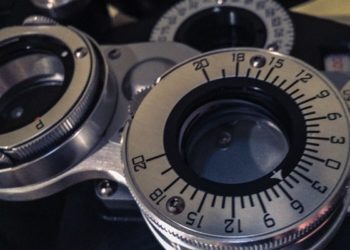[UKGTS trial] Latanoprost helps preserve visual field in open-angle glaucoma
1. Patients with open-angle glaucoma treated with latanoprost experienced significantly longer preservation of visual acuity and greater reduction of intraocular pressure than did patients treated with placebo eye drops.
Evidence Rating Level: 1 (Excellent)
Study Rundown: Open-angle glaucoma is the leading cause of irreversible blindness worldwide and is typically treated with intraocular-pressure-lowering drugs like latanoprost. This study aimed to assess the effect of latanoprost on the preservation of visual field in patients with open-angle glaucoma. Patients with open-angle glaucoma were randomly allocated to receive either latanoprost or placebo eye drops. Time to visual field deterioration was measured as the primary outcome within the next 24 months. Visual field preservation was significantly longer in the latanoprost group as compared to the placebo. The randomized controlled study design allows the establishment of causation between intervention and outcome, as well as minimizes provider and observation biases. Relatively high loss to follow-up may moderately limit the power of this study.
This study was funded by Pfizer and the UK National Institute for Health Research Biomedical Research Centre.
Click to read the study, published today in The Lancet
Relevant Reading: An evidence-based review of prognostic factors for glaucomatous visual field progression
In-Depth [randomized controlled trial]: This study aimed to assess the effect of latanoprost 0.005% eye drops on the preservation of visual field in patients with open-angle glaucoma. Patients with new-onset open-angle glaucoma were randomly allocated (1:1) to either receive latanoprost 0.005% or latanoprost vehicle eye drops (placebo) in both eyes once a day. During the period from December 2006 to March 2010, the study enrolled 516 patients and the final data analyses included 461 patients.
The primary endpoint was time to visual field deterioration. Visual field testing and intraocular pressure measurements were completed at 18 months and 24 months. The latanoprost group showed significantly longer visual field preservation than the placebo group (adjusted hazard ratio, 0.44; 95% confidence interval, 0.28-0.69; p=0.0003). At 24 months, the latanoprost group also demonstrated a greater lowering of intraocular pressure in 231 patients of 3.8mmHg (standard deviation, SD, 4.0) when compared to 0.9 mmHg (SD 3.8) in 230 placebo patients.
More from this author: 40-year trends of net cancer survival reveal improved outcomes, START intervention for dementia caregivers linked to reduction of depression symptoms, Mechanical CPR provides no benefit over manual CPR [PARAMEDIC trial], Group B streptococcus infections on the rise despite prevention guidelines, Transplanted stem cells help restore sight in age-related macular degeneration
Image: P
©2014 2 Minute Medicine, Inc. All rights reserved. No works may be reproduced without expressed written consent from 2 Minute Medicine, Inc. No article should be construed as medical advice and is not intended as such by the authors, editors, staff or by 2 Minute Medicine, Inc.






